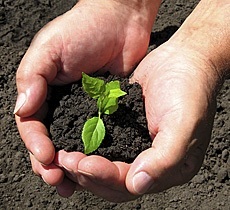Garden Care
Garden care doesn’t have to take up all your spare time. Perhaps the main reason some new gardeners fail is that they don’t pay attention to the garden often enough.
You need to know the how, why, and when of taking care of your garden, but you also need to stroll through your garden every few days and just look around. That way you will notice if seedlings are parched or the hostas are getting eaten by slugs.
Beginner gardening – so where do you start?
If you’re like most of us, you won’t start with a plan. My own big motivation for gardening was the need to turn a plain-Jane backyard into an inviting garden (we were moving into our first house in 1991). I learned by digging in. I had no grand plan, just raw enthusiasm.
What made it easier for me was that I’d had plenty of practice in my mother’s vegetable garden while growing up, so while I didn’t know much about flower gardening at the time, I did know the basics of planting and weeding.
In the first few years, I moved plants around so much that my husband joked that my perennials should have had wheels, not roots.
The fact is that most gardens evolve. It’s difficult to draw up a plan on paper (as instructed by garden designers) when you can’t tell a daisy from dianthus.
Once you’ve learned a few horticultural ropes and have discovered what appeals to you, you’ll have a better idea about how you would like your garden to look.
The best garden soil for most plants
Most plants thrive in loamy soil that’s moist but well drained – a seeming contradiction that simply means soil that retains moisture, but doesn’t stay too wet.
Garden soils that are very sandy let water to percolate through quickly and dry out fast, which leaches plant nutrients out quickly too.
Clay soils are rich in mineral-based elements and nutrients that plants need, but they have the opposite problem: they easily become waterlogged, as vital air pores fill with water. This can kill off soil organisms and injure or destroy plant roots.

